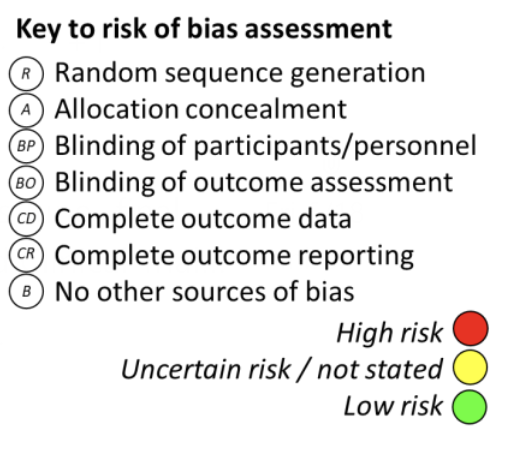
Chalking up success with old school binders? Calcium vs Lanthanum
Effect of Treating Hyperphosphatemia with Lanthanum Carbonate vs Calcium Carbonate on Cardiovascular Events in Patients
with Chronic Kidney Disease Undergoing Hemodialysis. The LANDMARK Randomized Clinical Trial
Ogata et al. JAMA. 2021;325(19):1946-1954
Summary: 2309 hyperphosphatemic chronic haemodialysis patients with at least one vascular calcification risk factor were randomized to either lanthanum carbonate or calcium carbonate in an open label manner, with blinding of investigators at the time of endpoint analysis. Median follow-up was 3.16 years. The primary composite end-point of cardiovascular events occurred in 147 of 1063 participants on lanthanum compared with 134 of 1072 participants on calcium, with a non-significant HR of 1.11 (95%CI, 0.88 to 1.41: P=0.37). Cardiovascular mortality was significantly higher in the lanthanum carbonate group vs. calcium carbonate (absolute difference, 0.61 per 100 person-years [95%CI, 0.02 to 1.21]; HR 1.51 [95% CI, 1.01 to 2.27]; P=0.045) as was secondary hyperparathyroidism. There was no difference in overall survival or hip fracture rates.
Comment: This large trial with a long follow-up period was unable to demonstrate an advantage to using lanthanum over calcium-based phosphate binder therapy. Moreover, they found a higher cardiovascular mortality rate using lanthanum which contradicts the suggested hypothesis in that easing calcium load will delay vascular calcification and therefore cardiovascular events. These are important clinical findings where calcium-based therapies are widely available and less costly but have been discouraged from use by international guidelines. However, it is important to consider the limitations in generalisability of this study. The solely Japanese cohort had an exceptionally low event rate, even for a population with up to half the burden of cardiovascular mortality in their hemodialysis population compared to some Western countries. This may relate to their exclusion of those with recent cardiovascular events or significant CKD-MBD. Also of note, both study arms were permitted concomitant use of sevelamer (more prevalent in the calcium group) which is of uncertain significance on the outcomes analysed, and authors were unable to adequately power their trial due to under recruitment despite readjusted targets.
Improving medication management for transplant patients
Pharmacist-Led Mobile Health Intervention and Transplant Medication Safety: A Randomized Controlled Clinical Trial.
Gonzales et al. Clin J Am Soc Nephrol. 2021;16(5):776-84
Summary: In this single centre, single-blinded study, 136 adult kidney transplant recipients were allocated to receive assistance with medication management via a smartphone app linked to their electronic medical record, and enabling medication reminders, remote monitoring, and telehealth consultations with a clinical pharmacist. After 12 months of follow up, there were fewer medication errors in the intervention group (614 vs 1385; incidence rate ratio (IRR) 0.39, 95% CI 0.28 to 0.55; P<0.001). The intervention group also had a significantly fewer hospitalizations (44 vs 74 (IRR 0.46, 95% CI 0.27 to 0.77; P=0.05).
Comment: Safe and accurate medication management is key in the early post transplantation period to preventing organ rejection and minimising harmful side effects. A mobile application could be an efficient way forward to engagement in good medication monitoring and early notification of potential issues, particularly in younger patients who are adept at utilising technology in their everyday lives. The results of this study are promising, although the broad definition of medication error including events of uncertain importance, such as minor electrolyte abnormalities, may have led to overestimation of difference. The reduction in hospitalizations is also welcome, although unexpected, and requires confirmation in future studies. Data on kidney function, rejection, blood pressure and diabetes control, and polypharmacy was not presented. A costeffectiveness analysis is planned. A longer-term study over multiple centres would be helpful assess the generalizability of the intervention.
Reducing sedentary duration and increasing stepping duration in patients with CKD may be feasible but not sustainable
Targeting Sedentary Behavior in CKD. A Pilot and Feasibility Randomized Controlled Trial
Lyden et al. Clin J Am Soc Nephrol. 2021; 16: 717–26
Summary: This single-centre pilot study involving 106 patients with stage 2-5 CKD randomised participants to a “Sit Less, Interact, Move More (SLIMM)” program, where they were advised to get up from sitting or lying at least once per hour while awake, and to undertake light intensity activities, or were provided with standard physical activity recommendations of 150 minutes per week of moderate/vigorous activity. Physical activity was assessed with an accelerometer worn on the thigh for one-week intervals at baseline and every 4 weeks in the SLIMM program, and every 8 weeks in the standard activity group. The SLIMM program patients were also shown their accelerometer summaries as ongoing feedback. At 20 weeks the SLIMM group had a 43min reduction in daily sedentary time (95% CI -69 to -17 min/d) but this effect was not statistically significant at 24 weeks (-18 min/d, 95% CI -46 to 10 min/d). Similarly at 20 weeks there was a 16min improvement in daily time spent stepping, but this was not significant at 24 weeks. Within the secondary endpoints, there was a modest reduction in BMI (-1.1 kg/m2 95%CI -1.9 to -0.3 kg/m2 ), and body fat percentage but no difference in waist circumference.
Comment: Increased physical activity can improve cardiovascular health, metabolic parameters, and patient well-being, although sustained change is difficult to achieve. The use of accelerometers is a promising strategy, particularly as there are now many products commercially available. While the effect in this study may have been limited by a heterogenous trial patient group, ranging from those with stage 2 CKD to those on haemodialysis, this pragmatic approach also demonstrates the feasibility of the intervention in a broad group of individuals likely to attend a nephrology service. While there was no difference at 24 weeks, the significant (if modest) improvements in BMI and body fat percentage may yet be clinically meaningful. Further studies are required to explore pragmatic, practical strategies for increasing physical activity.
Voclosporin increases the efficacy of standard of care treatment for lupus nephritis
Efficacy and safety of voclosporin versus placebo for lupus nephritis (AURORA 1): a double-blind, randomised, multicentre,
placebo-controlled, phase 3 trial
Rovin et al. Lancet 2021; 397(10289):2070-2080
Summary In this phase 3 trial, 357 patients with lupus nephritis (class III, IV or V) were assigned to receive the novel calcineurin inhibitor voclosporin 23.7 mg twice daily or placebo. All patients were treated with mycophenolate mofetil (MMF) 1g twice daily, intravenous methylprednisolone on days 1 and 2, and rapidly tapered low-dose steroids. The primary end-point of complete renal response at week 52 was defined as a composite of urine protein creatinine ratio (UPCR) of ≤0.5 mg/mg, stable renal function (eGFR ≥60 mL/min/1.73 m² or no decrease from baseline of >20%), no administration of rescue medication, and no more than 10mg prednisone equivalent per day during weeks 44-52. This end-point was achieved significantly more often in the voclosporin group (41%) than in the placebo group (23%, odds ratio 2.65; 95% CI 1.64–4.27; p<0.0001). All key secondary endpoints, including complete and partial renal response at 24 weeks, time to UPCR ≤0.5 mg/mg, and time to 50% UPCR reduction, achieved statistical significance in favour of voclosporin. The frequency of serious adverse events was similar in both groups (21%), with predominantly infective complications.
Comment: Lupus nephritis is one of the most severe manifestations of systemic lupus erythematosus, and can cause irreversible damage to the kidney. This trial demonstrates that voclosporin in combination with MMF and low-dose steroids is more effective for the treatment of lupus nephritis than MMF and low-dose steroids alone. The low complete response rate is noted, which may reflect both on the characteristics of the enrolled population (with a mean duration of diagnosis of lupus nephritis over 4 years) and the relatively low intensity of immunosuppression provided by the control regimen. The role of volcosporin in the management of lupus nephritis clearly remains to be properly established. Nevertheless, this new therapeutic regimen may prove an important advancement in the treatment of patients with lupus nephritis.
Can tolvaptan tackle fluid retention in haemodialysis patients?
Efficacy and safety of oral tolvaptan in patients undergoing haemodialysis: a Phase 2, double-blind, randomized, placebocontrolled trial
Ogata et al. Nephrol Dial Transplant 2021; 36: 1088-97
Summary: This multi-centre double-blind trial aimed to assess the efficacy and safety of tolvaptan in increasing urine volume and mitigating fluid retention between haemodialysis sessions. 124 participants were randomised in a 1:1:1 ratio to tolvaptan 15mg (n=40), tolvaptan 30mg (n=40) or placebo (n=44) once daily on non-dialysis days. At 24-weeks the 15mg tolvaptan group averaged a 429mL greater increase in 24 hour urine output from baseline than the placebo group (95%CI 231.0-627.2mL; p< 0.0001), while the 30mg group averaged a 371.6mL greater increase than placebo (95%CI 144.1-599.2mL; p=0.0017). There was no difference in change in total volume of fluid removal by dialysis per week and interdialytic weight gain, and no concerning safety signals.
Comment: Residual urine output in haemodialysis patients is an important research area given the association with improved patient survival and quality of life. Ogata et al demonstrated that tolvaptan can be well-tolerated and improves urine volume in the short term, although the present trial has not convincingly demonstrated benefits to dialysis fluid removal or intradialytic weight gain. It is important to note that there was a relatively high dropout rate in the placebo, 15mg and 30mg tolvaptan groups (34.1%, 15% and 10% respectively). The dropout rate in the tolvaptan groups is similar to other tolvaptan trials (i.e TEMPO 3:4 and REPRISE) but the high rate in the placebo group is unexpected. Further studies may be needed, including analysis of patient fluid intake, to demonstrate whether there tolvaptan can lead to an improvement in the key clinical outcomes of intradialytic weight gain and fluid removal.
Intradialytic exercise with a cycle reduces left ventricular mass in haemodialysis patients
A randomized controlled trial to investigate the effects of intra-dialytic cycling on left ventricular mass
Graham-Brown et al. Kidney Int 2021; 99(6):1478-86
Summary: This multi-centre double-blind trial aimed to assess the efficacy and safety of tolvaptan in increasing urine volume and mitigating fluid retention between haemodialysis sessions. 124 participants were randomised in a 1:1:1 ratio to tolvaptan 15mg (n=40), tolvaptan 30mg (n=40) or placebo (n=44) once daily on non-dialysis days. At 24-weeks the 15mg tolvaptan group averaged a 429mL greater increase in 24 hour urine output from baseline than the placebo group (95%CI 231.0-627.2mL; p< 0.0001), while the 30mg group averaged a 371.6mL greater increase than placebo (95%CI 144.1-599.2mL; p=0.0017). There was no difference in change in total volume of fluid removal by dialysis per week and interdialytic weight gain, and no concerning safety signals.
Comment: Residual urine output in haemodialysis patients is an important research area given the association with improved patient survival and quality of life. Ogata et al demonstrated that tolvaptan can be well-tolerated and improves urine volume in the short term, although the present trial has not convincingly demonstrated benefits to dialysis fluid removal or intradialytic weight gain. It is important to note that there was a relatively high dropout rate in the placebo, 15mg and 30mg tolvaptan groups (34.1%, 15% and 10% respectively). The dropout rate in the tolvaptan groups is similar to other tolvaptan trials (i.e TEMPO 3:4 and REPRISE) but the high rate in the placebo group is unexpected. Further studies may be needed, including analysis of patient fluid intake, to demonstrate whether there tolvaptan can lead to an improvement in the key clinical outcomes of intradialytic weight gain and fluid removal.




